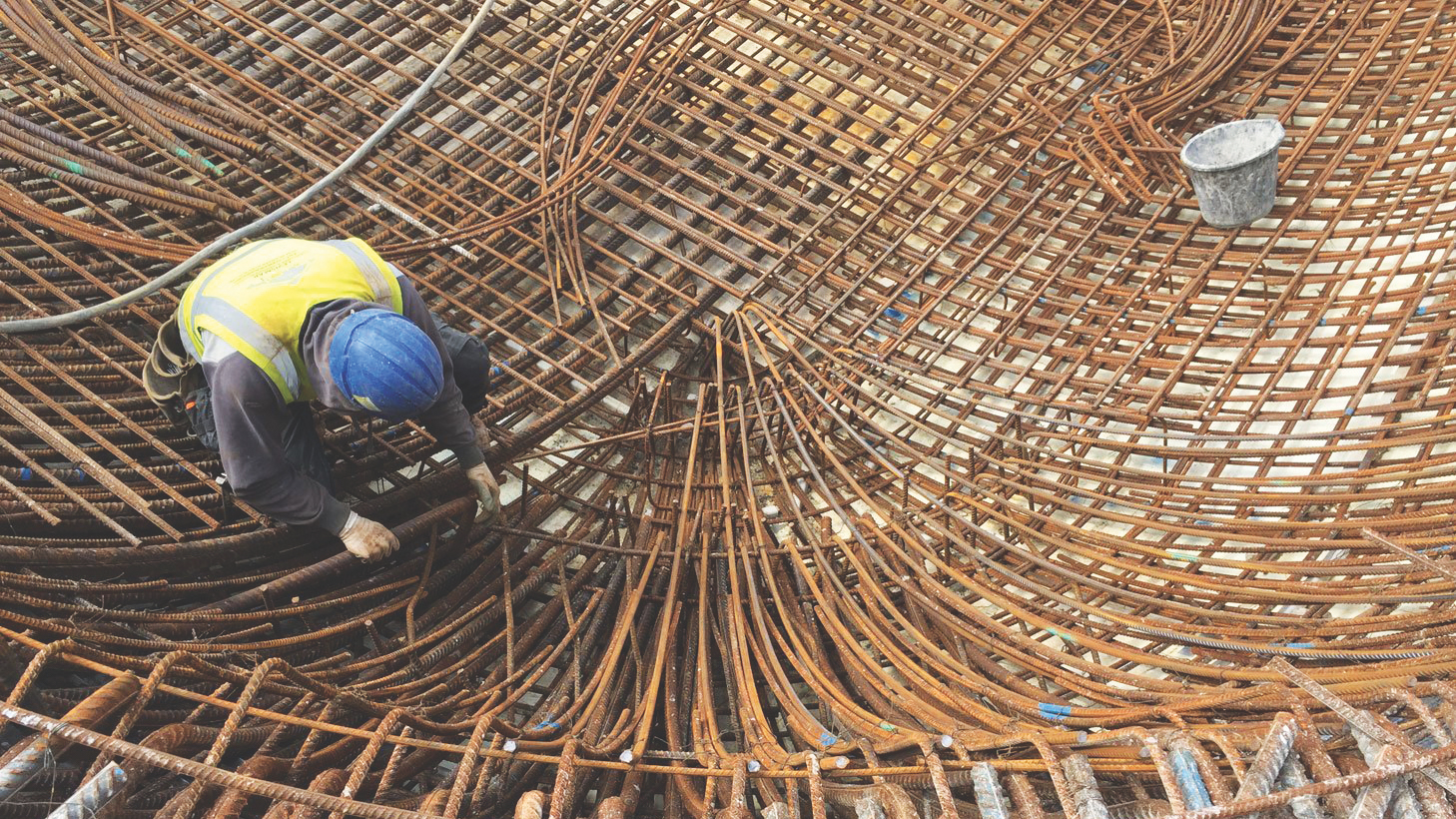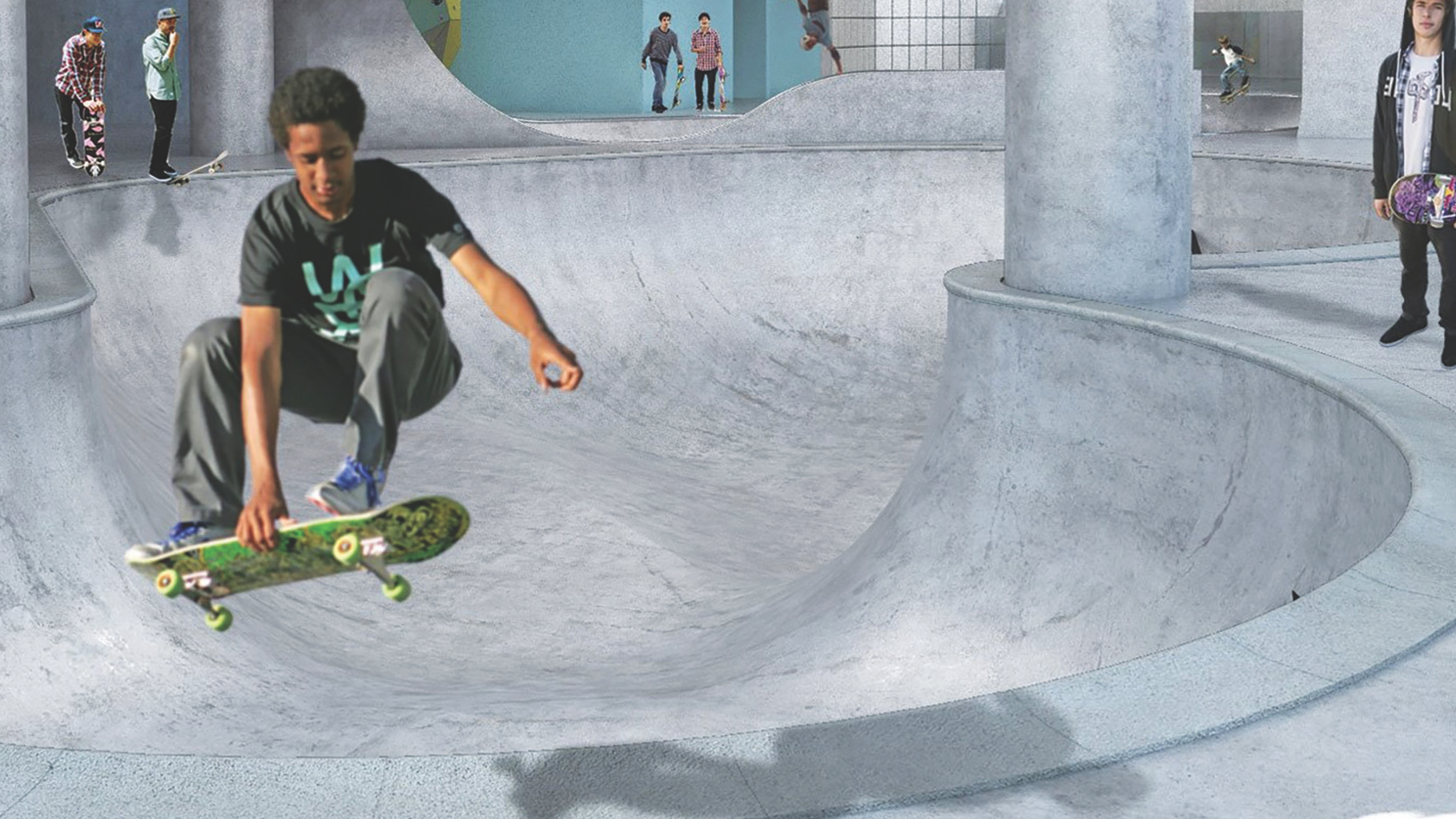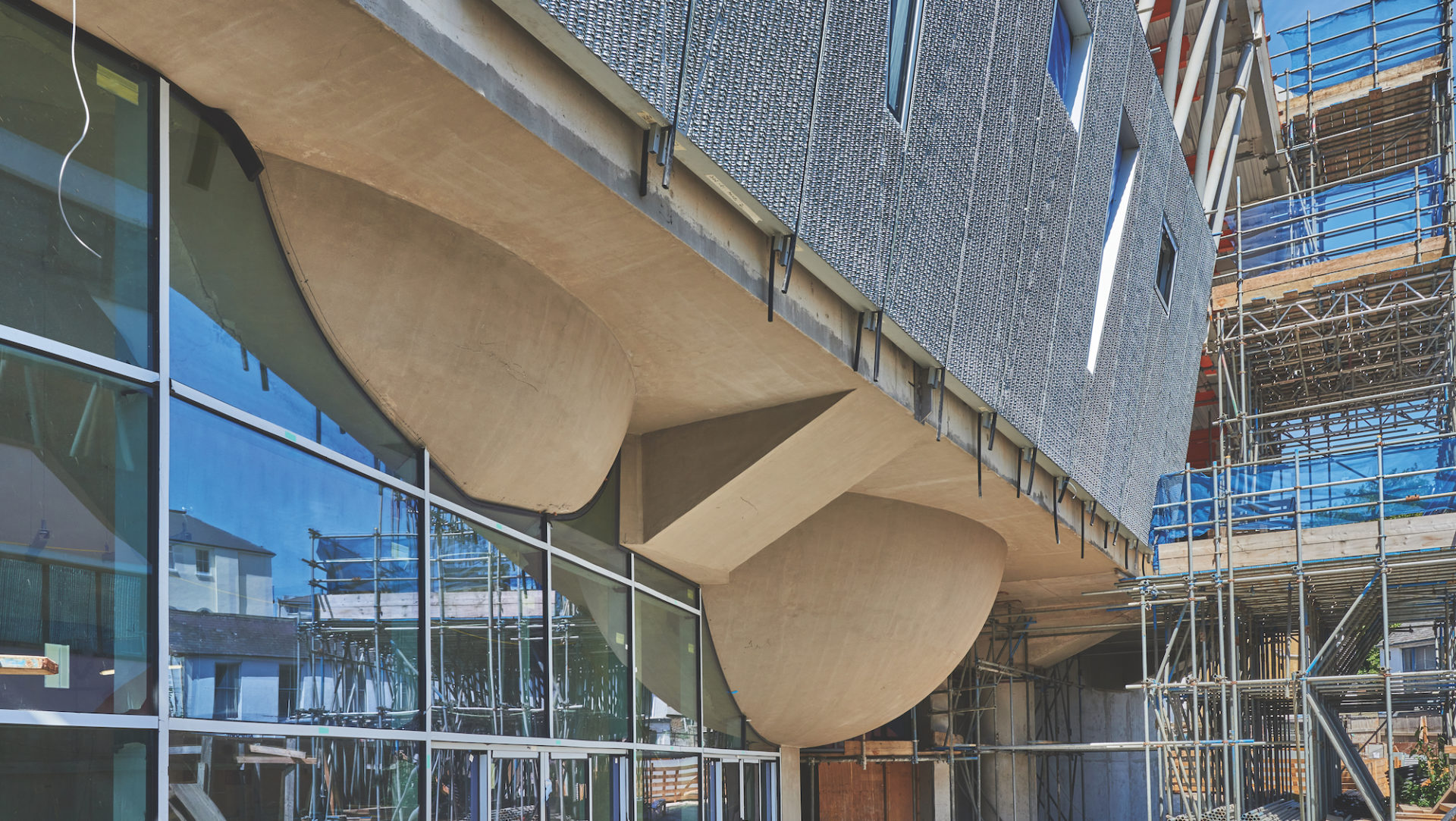
Kent contractor Jenner is working on a unique skatepark in coastal town Folkestone that will feature the world’s first suspended concrete skate bowls. Site manager Nigel Griffiths explains the technical challenges to Neil Gerrard
The idea of skateboarding may terrify Nigel Griffiths, site manager at Kent-based contractor Jenner, but he is a self-professed concrete lover, which makes him the ideal person to take charge of F51’s construction; it is believed to be the world’s first multi-storey skatepark and the first to feature suspended concrete skate bowls.
F51 is the brainchild of local philanthropist Roger De Haan, former chief executive of Folkestone-based insurance group Saga, who has poured millions of pounds into the regeneration of the town.
Originally destined to become a multi-storey car park, the concept for the site on the corner of Tontine Street and Dover Street gradually morphed into a plan for a skatepark that is being funded by the Roger De Haan Charitable Trust and will be managed by the local Shepway Sports Trust.
“On a traditional slab we would probably pour continuously from start to finish. Because we were spraying the concrete, we marked the bowls into sections and completed one section per day”
Work on the skatepark, a short walk from Folkestone Harbour, where De Haan is backing the construction of 1,000 seafront homes (the first phase of which is also being built by Jenner), began in March 2018.
The four-storey building is an unusual shape, a parallelogram on plan, with the upper floors splaying outwards and then back in at the top. It is a concrete frame up to the first floor, then a steel and concrete composite above.
The glass-wrapped ground floor will feature an unheated ‘urban’ community cafe and a boxing gym, while the second and third floors will contain plywood skating bowls, ramps suitable for BMX and a climbing wall.

Project factfile
Client: Roger De Haan Charitable Trust
Main contractor: Jenner
Architect: Hollaway
Value: £10m
Programme:
March 2018: Construction starts
Summer 2021: Completion due
Key subcontractors:
Groundworks, concrete frame and structural concrete bowls: Darby
Structural steel: Metalfab Engineering
Facade manufacturer: Imar
Facade installation: Apex
Timber skate bowls: Cambian
Climbing wall: King Kong
Concrete skate surface: Maverick
Curtain walling and facade windows: Sealtite Windows
Electrical: PA Grant Electrical
Mechanical: HOB Mechanical
The suspended concrete skate bowls are on the first floor, their bases clearly visible from below, with one swooping above the main entrance. The undulating surfaces will be left exposed, creating a cave-like entrance hall, supported by curving concrete columns.
“The whole project has been planned around the concrete skate bowls,” Griffiths says. “I have built shaped concrete bowls similar to this in the past because I have done ‘rapids’ in leisure centres – artificial river channels for people to slide down – but never suspended like this.”
A 3D digital model helped the suspended bowls’ installation. Specialist firm Cordek, which produces forms for precast concrete, manufactured polystyrene moulds that acted as the falsework for the bowls. They were delivered to site on eight separate articulated lorries and fitted together like a jigsaw.
“We used the 3D model to work out the positions of the falsework, which had to be installed at three different levels because of the different levels of the soffits,” Griffiths says.
More complex was the rebar because every bar had to be positioned individually. It took six weeks to design and schedule and another three to four weeks to fix into place. Once it had been installed, the concrete was sprayed on to the moulds.

“It was a P45 spray mix – basically cement and sand with a few pebbles thrown in which has to go through a spray gun and nozzle,” Griffiths explains. “It is a lot drier and stays in place well, so we only needed a single-sided shutter; we didn’t have to shutter the inside of the bowls.
“On a traditional slab we would probably pour continuously from start to finish. Because we were spraying the concrete, we marked the bowls into sections and completed one section per day,” says Griffiths.
The concrete spraying took two weeks, with the bowls’ 500mm-thick structural concrete overlaid with a 150mm layer of concrete topping on top, employing the same mix.
“We decided that this was the most economical approach; as the structural concrete was not required to be finished to such a high standard, larger areas could be completed more quickly,” explains Griffiths.
“The structural bowl also gave the finishing concrete gang something to fix their levelling rails to, as a tighter tolerance for the topping was required. Standard spray concrete is usually laid to a tolerance of +/- 25mm and the topping needed to be +/- 2mm for skating on.”
The structural concrete was finished with a rough trail to ensure that there was a good key for the topping. The flat areas of the topping were then finished with a power float, while a hand trail finish was applied to the slopes and radiuses of the skate ramps.
In total, 1,500 cu m of concrete has been used on the project, including 200 cu m of the specialist spray mix, plus 300 tonnes of reinforcement bar.
The plywood skating bowls were manufactured in a factory in Horsham in West Sussex before being delivered to site, lifted in and positioned.
“They look like formwork, but you don’t put any concrete on them, obviously,” says Griffiths.

While the skating bowls’ construction has progressed smoothly, the facade proved more challenging. Originally, the plan had been for the curtain wall cassette system, manufactured by Spanish firm Imar, to be made up of aluminium mesh inside and out.
But such a design would have driven rain into the structure. Rainwater in the concrete skate bowls would result in them having to be closed and the Roger De Haan Charitable Partnership decided that too many days’ skating would be lost. So instead, the aluminium facade will be watertight. However, this meant increasing the weight of the facade panels, which made fixing them on the structure more complicated.
Griffiths explains: “Whereas normally you would stack your cladding from the bottom up with a few expansion joints, each panel has to hang from the floor above on the panel below, using a sliding spigot junction.
“The facade panels on the top level are fixed to the roof via a pin connection but they do not hang vertically. Instead, they slope out by 10 degrees, then slope back in at the same angle, and sit over the spigots on the panels below.”
“These panels have two spigots coming out of the top of them, which are used to restrain the panel above horizontally in both directions, but offer no vertical support.”
Lifting the panels into position has also required some careful thought by Jenner’s team.

“The panels were lifted onto the building with a tower crane, but because the lower panels are under the overhang of the floors above, they required the use of an offset lifting beam,” explains Griffiths.
Construction manager CV: Nigel Griffiths
Nigel Griffiths has spent the last six years working for Jenner. He started his career at Wiltshier Construction, which later became Ballast Wiltshier, where he trained for a Higher National Certificate (HNC). He then moved on to Denne Construction, which later became Bouygues, prior to joining Jenner.
Griffiths is a leisure specialist, having previously built Horsham Leisure Centre and Buckmore Park kart track in Kent.
The panels above, which slope out and then back in, have an uneven load, so Jenner needed to lift these panels in two places to ensure they engaged over the spigots at the correct angle.
Griffiths says: “We only have 2mm tolerance between the ‘cut out’ in the bottom of the panel and the spigot which fits into it. If the panel is not at the correct angle, the aluminium components lock together and stop the panel dropping into position. As every panel is different, the lifting chains had to be a different length for each one.”
The facade is now complete on two of the floors. However, there is a delay on the panels that run from the third floor to the roof, due to covid-19 restrictions in Spain which resulted in Imar’s factory shutting down.
F51 is now scheduled to complete in summer 2021. Griffiths says he might try out the climbing wall, although he draws the line at dropping into any of the bowls on a skateboard.










